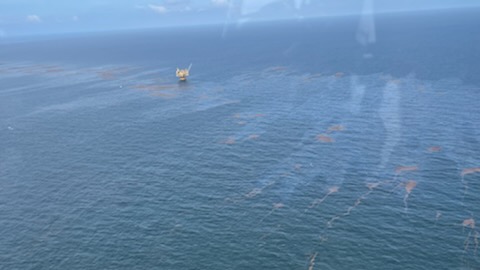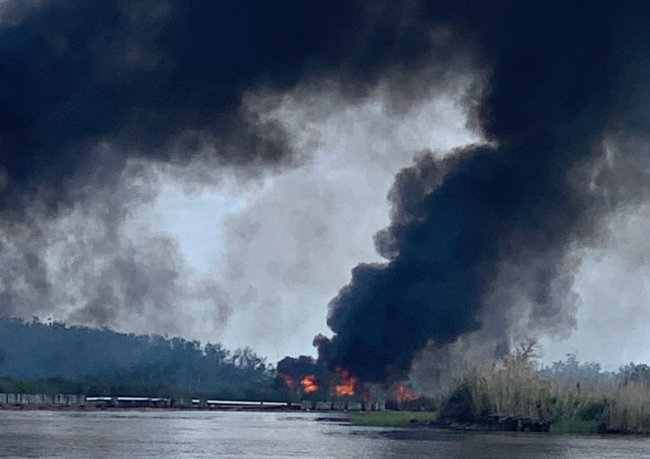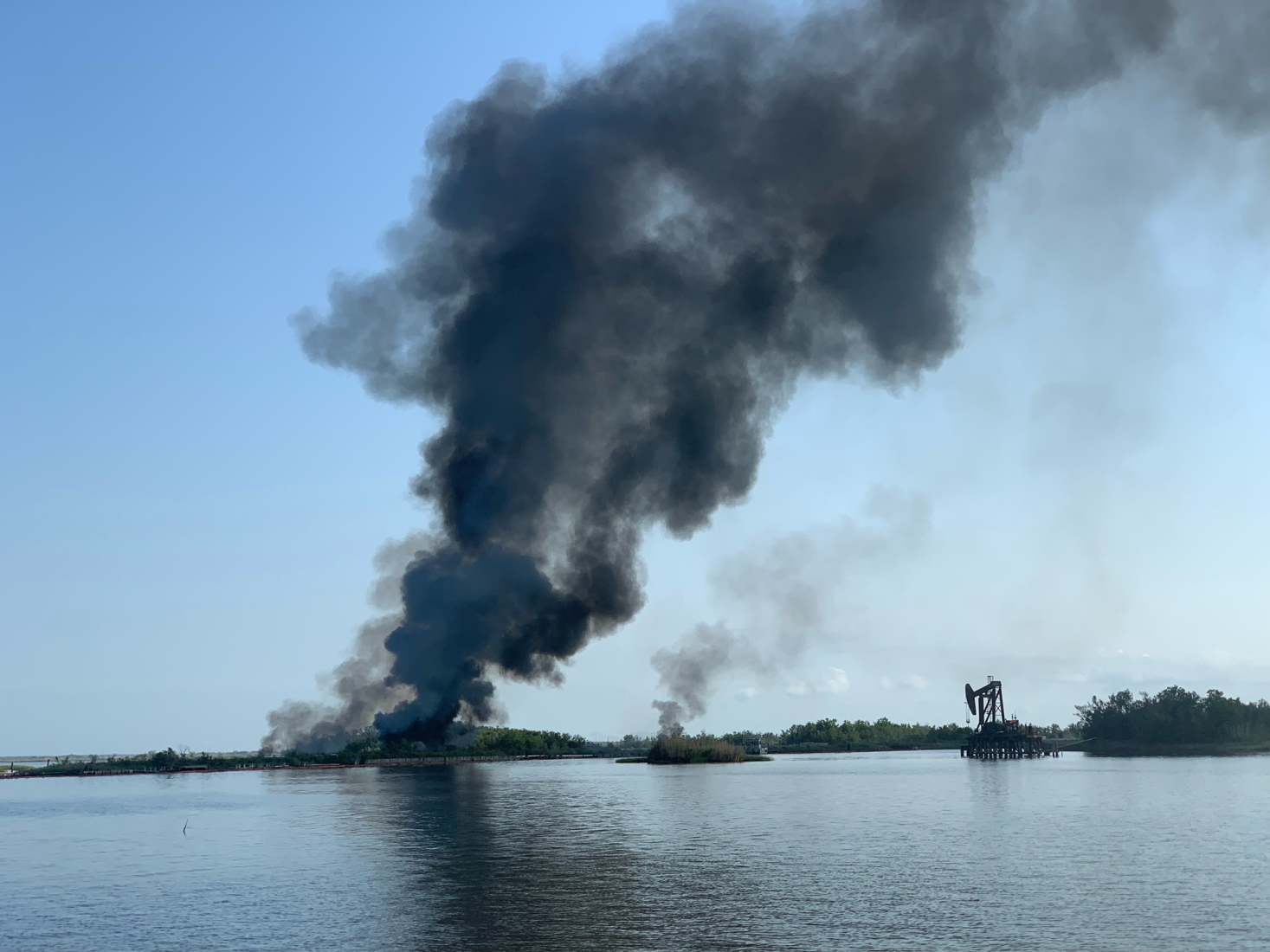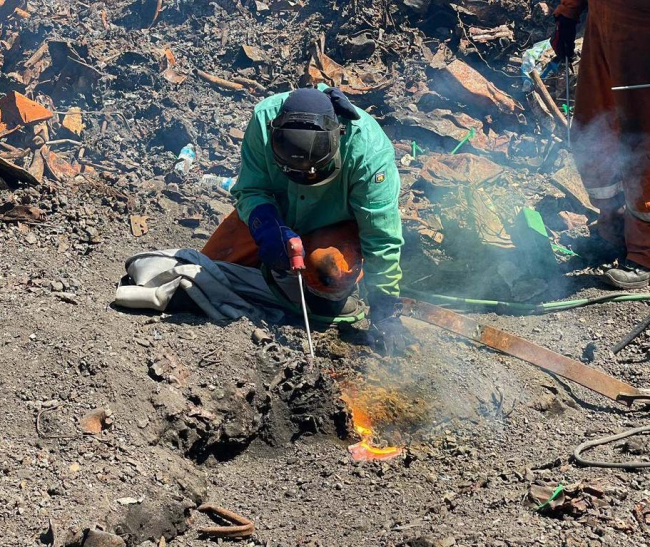
Every month OR&R’s Emergency Response Division provides scientific expertise and services to the U.S. Coast Guard on everything from running oil spill trajectories to model where the spill may spread, to identifying possible effects on wildlife and fisheries and estimates on how long the oil may stay in the environment. We also get requests to track and model other floating objects.
In May 2022, OR&R provided response support to 35 incidents, including 17 new incidents in 11 states. The new incidents included 13 actual or potential oil spills, two chemical spills, one barge fire, and one whale carcass. The division prepared 98 new incident reports and documents, including eight fate and trajectory analyses. Cumulatively, these incidents posed the risk of over 69,000 gallons of oils and chemicals. (Note: Spill volumes are approximate and based on initial information that may be updated after further investigation).
Mystery Sheen Reported Near Mississippi Canyon Block 245 in the Gulf of Mexico
On May 2, the U.S. Coast Guard Marine Safety Unit in Houma notified NOAA of a mystery sheen in the Gulf of Mexico. The mystery sheen, located 28.5 nautical miles southeast of South Pass, Louisiana, had an unknown source near Bureau of Ocean Energy Management lease block 245.
The spill quantity was estimated to be 47 barrels of oil with a sheen length of 31 miles and width of one mile. The responsible party is unknown and the source is still being investigated. NOAA provided a trajectory forecast for the oil.
Oil Discharges into Marsh from Aboveground Pipeline near Hackberry, Louisiana
On May 9, the Texas Petroleum Investment Company observed a discharge from an above-ground pipeline in a marsh near Hackberry, Louisiana. The estimated discharge was approximately two barrels of crude oil, some of which migrated to Black Lake, and the rest impacting marsh vegetation.
Responders at the scene placed containment boom to prevent further impacts and used skimmers to obtain the recoverable product. Responders contacted NOAA for support in preparing for an in-situ burn of the remaining oiled product.
Barge on Fire after Lightning Strike, in Delaware Bay, New Jersey
On May 23, the Coast Guard notified NOAA that a barge loaded with scrap metal was on fire after getting struck by lightening during a storm the night before. Marine fire fighting teams went on scene, and the Coast Guard requested NOAA provide technical and scientific support.
A Unified Command consisting of representatives from Eastern Metal Recycling, New Jersey Office of Emergency Management, Cumberland County Office of Emergency Management, New Jersey Department of Environmental Protection, and the U.S. Coast Guard was established to oversee salvage operations.
Salvage operations were completed on June 6, removing the vessel from shallow waters off the coast of New Jersey, in the Delaware Bay. The barge was towed to its original destination in Camden, New Jersey.
Here are some of May's notable incidents:
- Mystery Sheen, Mississippi Canyon Block 245, Gulf of Mexico
- Oil Discharge in Tabbs Bay, Baytown, TX
- Discharge of Natural Gas, Crude Oil, and Salt Water from Well in Cameron Parish, LA
- USCG Vessel Strikes Buoy, Resulting in Release of Marine Diesel, Saginaw Bay, MI
- Fishing Vessel Sinks in Vicinity of Dickinson Bay, Texas City, TX
- Weathered Tarballs in Southern California, Santa Monica Bay to Dana Point, CA
- Disabled Yacht with 7 People Aboard, 45 Miles NW of Grays Harbor, WA
- Discharge into Marsh from Aboveground Pipeline, Hackberry, LA
- Spill of Ethylhexyl Nitrate (Diesel Additive), Cap Sante Marina, Anacortes, WA
- Sperm Whale Carcass: Drift Analysis, Key West, FL
- Marine Diesel Discharge from Tug Vessel, Lemont, IL
- Possible Sheen Report off San Diego, CA
- Vessel Fire/Sinking About 4 Miles Offshore of Gulfport, MS
- Barge on Fire after Lightning Strike, Delaware Bay, NJ
- Tanker Vessel Aground, Fairport Harbor, OH
- 90-foot Motor Yacht Sinking, Virginia Beach, VA
- Discharge of Drilling Mud from Unmanned Platform, High Island 582 Block, Texas







